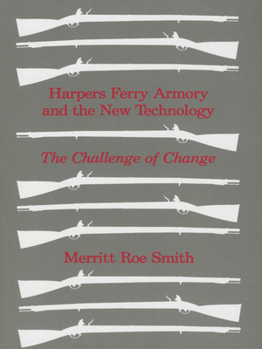Harpers Ferry Armory and the New Technology: American Thought and Culture 1680-1760
Select Format
Select Condition 
Book Overview
Focusing on the day-to-day operations of the U.S. armory at Harpers Ferry, Virginia, from 1798 to 1861, this book shows what the new technology of mechanized production meant in terms of organization, management, and worker morale. A local study of much more than local significance, it highlights the major problems of technical innovation and social adaptation in antebellum America. Merritt Roe Smith describes how positions of authority at the...
Format:Paperback
Language:English
ISBN:0801491819
ISBN13:9780801491818
Release Date:April 1980
Publisher:Cornell University Press
Length:364 Pages
Weight:1.21 lbs.
Dimensions:0.7" x 6.1" x 9.1"
Age Range:18 years and up
Grade Range:Postsecondary and higher
Customer Reviews
2 ratings
Superb history on a challenging subject
Published by Thriftbooks.com User , 15 years ago
Smith's research and analysis on a topic with few records and nearly 200 years in the past in a remote rural community is an extraordinary achievement for any historian. Smith takes a deep look at one of George Washington's poorer ideas, establishing the second national firearms manufacturing operation in a remote small town in Virginia, next to a swamp so malaria is an ongoing major problem and workforce (and workforce housing) are always difficult to find and keep as well as Philadelphia being the closest relevant industry hub. It's a study of the fiesty craftsman approach (Harpers Ferry) vs solving challenges with new machine tools (Springfield Armory) common to all manufacturing then and now so the lessons are relevant to anyone in manufacturing today. The quest for quality, interchangeable parts, worker training, developing new models (Lewis & Clark get their rifles here, the Hall Breechloader is developed mostly here and one of the team goes on to create the Sharps rifle), productivity (Springfield Armory outproduces them tremendously, inventing milling machines and multi-spindle lathes along the way.) It's a great book for anyone interested in 19th century gunmaking, manufacturing in general, rural economic development strategies, workforce training, implementing new technologies with existing workforces (always an adventure and often a failure), or even those who wondered why John Brown thought seizing it would immediately facilitate a widespread slave uprising.
More than a chronicle.
Published by Thriftbooks.com User , 17 years ago
Merritt Roe Smith's 1984 book, Harper Ferry Armory and the New Technology; the Challenge of Change, on its face chronicles the rise, existence, and demise of the national armory located at Harpers Ferry, Virginia. However there is much more to it than that. A common understanding of American industrialization derives from the scarcity of labor. As a result, so the reasoning goes, Americans adopted and adapted to the use of machinery more willingly and with fewer problems than other places. On the contrary, during the course of his research Smith found that at Harpers Ferry, for example, this was not the case. Persistent conflict was the norm rather than harmonious progress. Thomas Jefferson's vision of an agrarian democracy conflicted with George Washington's views as a landowner and a businessman. The "middle landscape" that Jefferson saw at Harper's Ferry was to Washington an avenue for trade and development. Washington, according to Smith, is the main force behind the Armory. Washington argued that the availability of water, the furnaces and forges nearby and because of its more secure location, Harpers Ferry should be the location of a new arsenal. Problems of transportation, remoteness, labor and "a social milieu [not] adaptable to change and regimentation"(33) contrasted sharply with the armory at Springfield, Massachusetts. Residents at Harpers Ferry saw their local priorities as more important than the armory's national purpose. Herein lies the basis for Smith's thesis: "The story of Harpers Ferry, most notably the efforts of its inhabitants to preserve accustomed life styles and practices in the wake of accelerating technology, presents a microcosmic view of the industrial revolution which is perhaps more suggestive of America's bittersweet relationship with the machine than many historians have heretofore recognized."(21) In expanding on his thesis, Smith discusses the development of technology in early America in relation to the rifle, the development of a factory system, machinery used in the factory, the impact of this machinery on people, the inventiveness and entrepreneurial successes and failures of people, the evolution of the "American System" of interchangeable parts, and the applicability of information and resources, including labor. Smith contrasts the Harpers Ferry and Springfield armories. The need for national armories stemmed from the inadequacy of the contract system, which had previously furnished arms. Early on a new rifle was developed at the Harpers Ferry armory. The Model 1803 "short" rifle was unique in its aesthetics and historical significance "as the first regulation rifle to be manufactured at the government armories."(56) Its character is reflective of Pennsylvania craftsmanship derived from armorer Joseph Perkins' design and the skilled workmen he brought with him. Early gunsmiths were craftsmen who worked under the highly individualistic "task-oriented" labor system. Because of the craft tradit





